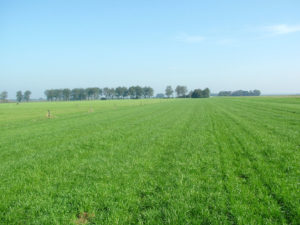How to optimise grass growth on your livestock farm
With the ever-increasing cost of bought-in livestock feed, looking at how to optimise grass growth and soil management.
There are a number of factors that could limit your grass growth:
- Nitrogen levels (N)
- Soil
- Drainage
- Structure
- pH
- Temperate – both soil and environmental
- Soil moisture
Good soil management is a crucial factor to consider when looking to increase grass growth, for either direct grazing or silaging for later feeding.
To establish good soil management practices, it is important to test your soils across the farm and identify any particular nutrient deficiencies. This will help you work out an appropriate fertiliser spreading plan later down the line.
During the soil testing phase, it is also important to check the physical condition of your existing grassland – look out for areas of increased soil compaction, fields be prone to flooding, or being water-logged for prolonged periods of time.
What does your grass need?
Whether you are sowing new swards or maintaining existing pastures, correct nutrition is crucial to ensure a good, consistent yield.
If you have already tested your soil for deficiencies, you should have identified nutrients already in good supply. This information will help ensure you are not over or under nourishing your grass, which can both impact the environment and your bottom line.
There are a number of routes for nutrients to enter soil and all should be considered when calculating fertiliser application rates:
- Previously applied purchased fertiliser including N straights, NPK (nitrogen, phosphate and potash) and lime
- Residual nutrients from previous crops of clover or alternative legumes used for nitrogen fixation
- Freshly produced manure from grazing livestock
- Farm yard manure (FYM) or slurry that has or will be spread on the land alongside purchased fertilisers
Once all of the above factors have been considered, and deficient nutrients have been identified, you can work with your agronomist or merchant to identify your required quantities for nitrogen over the coming year.
Fertiliser application
When applying nitrogen fertiliser, it is crucial to take a little-and-often approach by applying gradually reducing rates across the grazing season at regular weekly or bi-weekly intervals.
The first application of fertiliser should take place six weeks prior to stock grazing.
However, if this is not possible due to turnout happening earlier than planned in the spring, it is beneficial to hold off application of your first dose of N fertiliser until a spell of mild weather, as this will reduce nutrient losses into the environment.
April and May are key spreading times for fertiliser, when looking to maximise grass production, as soil typically responds best during this time of the year.
It is advised to stop spreading N fertiliser after August and a legal requirement to not spread manufactured N fertiliser between 15 September and 15 January in England and Wales, and until mid to late February in Scotland.
Fertiliser of any kind should never be applied to frozen, snow-covered, or waterlogged ground.


